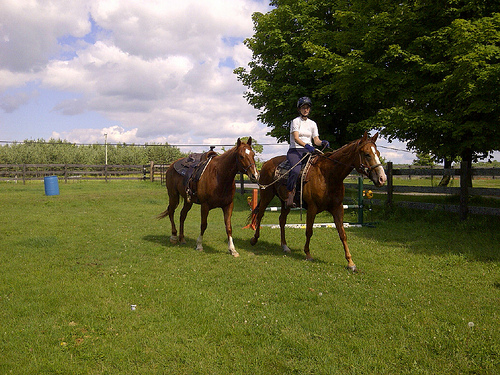
By Lindsey Partridge
When starting a young horse, it is really helpful to follow these steps:
1) Teach the horse the cues from the ground without any distractions: don't have the saddle or bridle on to start with because this can be too over whelming. Just start in round pen with the basic tools of a rope halter, lead rope, and arm extension stick. Try to pick a time with no or few distractions around the pen.
2) Continue practicing with some distractions: after the horse understands your cues, start to add some distractions to get a feel for how the horse will react. Add the saddle, bridle, and maybe a distraction or two around the ring like a dog running around, some obstacles set up, etc. This will help the horse to get desensitized and become more confident.
 3) Start some in saddle work: first start with just hopping up and down beside the saddle, putting pressure on the horse's back. Make sure the horse understands there is no need to get upset or worried. Once the horse can stay calm and relaxed, then you can start practicing mounting and dismounting. You can even pony the horse while the horse wears a sadddle.
3) Start some in saddle work: first start with just hopping up and down beside the saddle, putting pressure on the horse's back. Make sure the horse understands there is no need to get upset or worried. Once the horse can stay calm and relaxed, then you can start practicing mounting and dismounting. You can even pony the horse while the horse wears a sadddle.
4) Start some cues in the saddle, and use help if needed: We want the experience to be positive and easy for the horse. Start with simple cues that you have taught from the ground like that pulling back on the bridle means back up, or saying 'walk on' means walk on. If the horse gets confused, having someone lead you on the ground, or pony you while riding another horse can help the horse understand.
It is important to end on a positive note so when you come back to work with the horse again later it will be easier.







